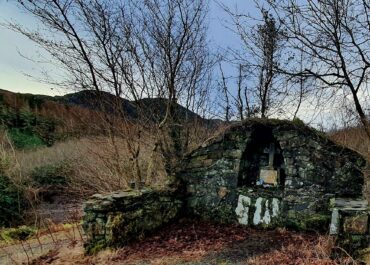Ecclesiastical site, Dooish, Co. Donegal
In the gentle landscape of County Donegal, where the River Finn carves its way through the valley, local tradition speaks of a lost abbey that once stood amongst what are now cultivated fields.
Ecclesiastical site, Dooish, Co. Donegal
Known as Templemonaghan, meaning ‘old church’, this ecclesiastical site has left no visible trace on the Ordnance Survey 6-inch maps, yet its memory persists in the collective consciousness of the area. The site lies on the southern side of the river valley, its exact location now known only through oral history and archaeological records.
The vanished abbey represents one of many such religious sites scattered across Donegal’s countryside, where medieval monastic communities once thrived. These establishments served as centres of learning, agriculture, and spiritual life, often supporting local populations through times of hardship whilst preserving manuscripts and maintaining literacy during turbulent periods. The absence of physical remains at Templemonaghan suggests either complete destruction over the centuries or perhaps that the structures were built from materials that have since returned to the earth.
Near Dooish, another ecclesiastical site tells a similar story of Donegal’s rich religious heritage. These locations, documented in the Archaeological Survey of County Donegal compiled in 1983, offer tantalising glimpses into a landscape once dotted with religious communities. While modern farming has claimed the land where Templemonaghan once stood, the site remains significant to understanding the spread of Christianity through Ireland and the network of religious houses that shaped medieval Donegal’s social and spiritual landscape.


